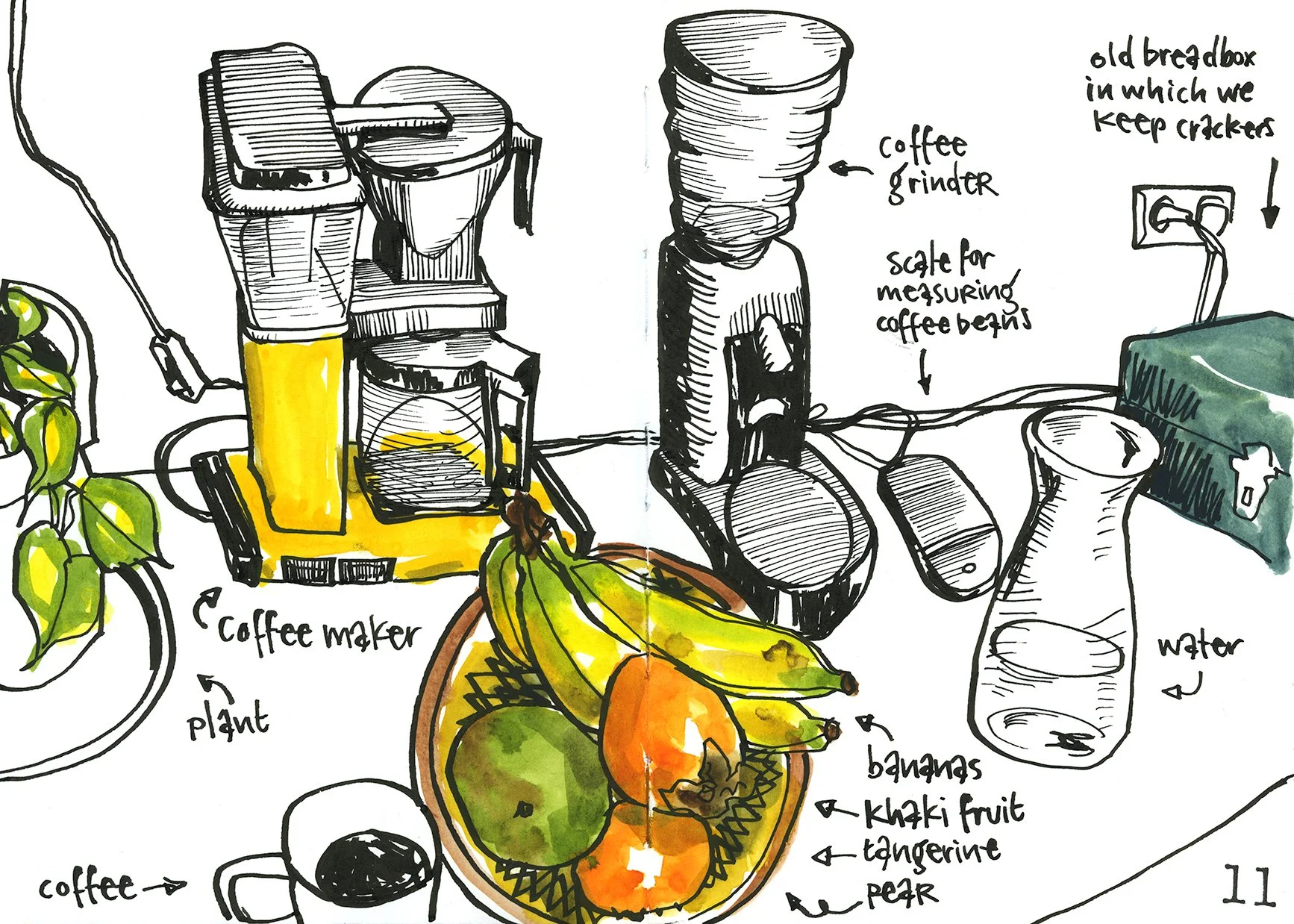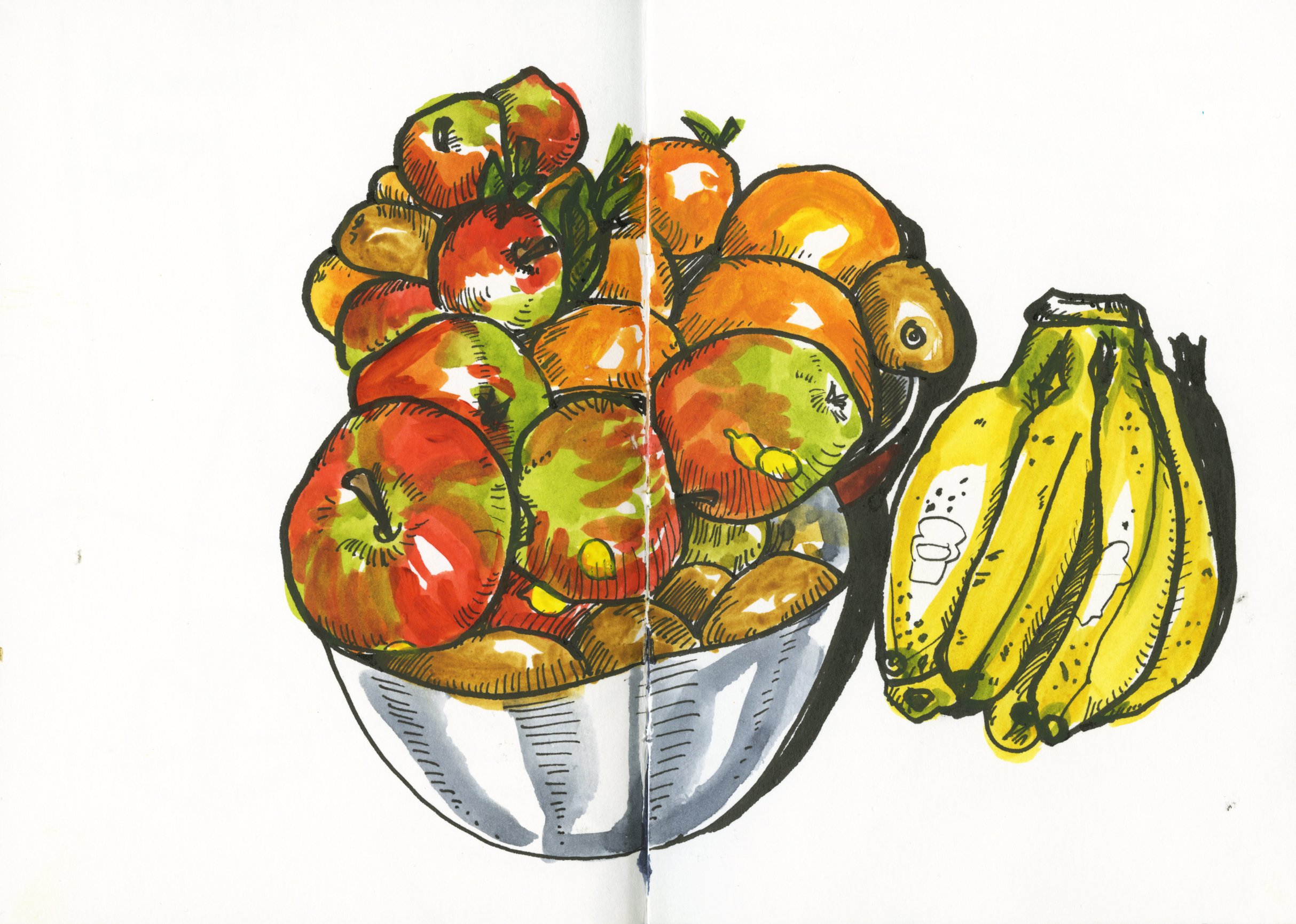Life is Better When You Draw (it) | Finding Meaning in Everyday Objects
When it comes to finding subjects for your drawings, why look any further than your kitchen? Mugs, glasses, and other household items might seem mundane at first glance, but they present a wonderful challenge for any artist. Let's explore why drawing everyday objects is not only a great exercise for practicing your skills but also a pathway to discovering the extraordinary in the ordinary.
The Beauty of the Everyday
The Challenge of Simplicity
Drawing everyday objects like mugs and glasses might seem straightforward, but it's this simplicity that makes it a true test of your skills. Capturing the curves, reflections, and textures challenges your eye-hand-coordination. Each object, no matter how simple, has its own unique characteristics.
Curves and Lines: The gentle curve of a mug handle or the straight lines of a glass rim can be surprisingly challenging. And when you don’t “get it right”: embrace the wonkiness.
Reflections and Shadows: Glasses are transparent as well as reflective. yikes! Capturing the way light plays off the surface and creates shadows makes a simple glass an interesting object for study.
Developing Observation Skills
Drawing everyday items forces you to slow down and really observe your surroundings. The mindful sense of observation is a valuable skill for any artist.
Attention to Detail: Noticing the small details, like the texture of a ceramic mug or the condensation on a glass: notice it and decide what you will capture on the page.
Perspective and Proportion: believe it or not, but looking at everyday objects gives you an excellent opportunity to practice perspective and proportion.
Everything is Interesting When You Draw It
Discovering Hidden Stories
Every item in your kitchen has a story. Maybe that mug was a gift from a friend, or that glass was a souvenir from a memorable trip. The jar of pasta makes you think of the recipe for a sauce your grandmother taught you… Drawing these simple everyday items can bring back memories and even emotions, making the process more meaningful while you’re telling your story in line.
Personal Connection: By drawing items with personal significance, you’re immediately adding depth and sentiment to your drawings.
Narrative Art: Don’t dismiss daily things as too mundane. Use these objects to tell a story. Your story.
The Art of Mindfulness
Drawing can be a meditative practice. Focusing on the task at hand allows you to be present in the moment. It reduces stress and through the creative flow, you’ll feel a sense of calm.
Mindful Practice: Drawing can be a form of mindfulness, helping you to relax and clear your mind. It is my absolute number one way for meditating.
Therapeutic Benefits: Drawing can be a therapeutic activity that helps process emotions.
Life is Better When You Draw (it)
Creativity in Everyday Life
Drawing encourages you to see the world differently. By finding beauty in the mundane, you start to appreciate the small things in life.
Creative Perspective: Seeing everyday objects as potential subjects to draw will make you more creative, and can inspire new ideas in other areas of life too.
Appreciation of Details: You’ll feel a greater appreciation for the details in your daily environment.
When “There’s Nothing to Draw”
Next time you're searching for a subject to draw, stop overthinking.Open a kitchen cabinet or drawer. Mugs, glasses, and other household items offer a perfect blend of simplicity and complexity, challenging your skills and enhancing your observation. Remember, everything is interesting when you draw it, and life is better when you draw it..
Don't Forget to Check Out My Book!
If you haven't already, make sure to get a copy of my book, "Life is Better When You Draw (it)." It's packed with tips, inspiration, suggestions and drawings, to help you discover the joy of drawing.












